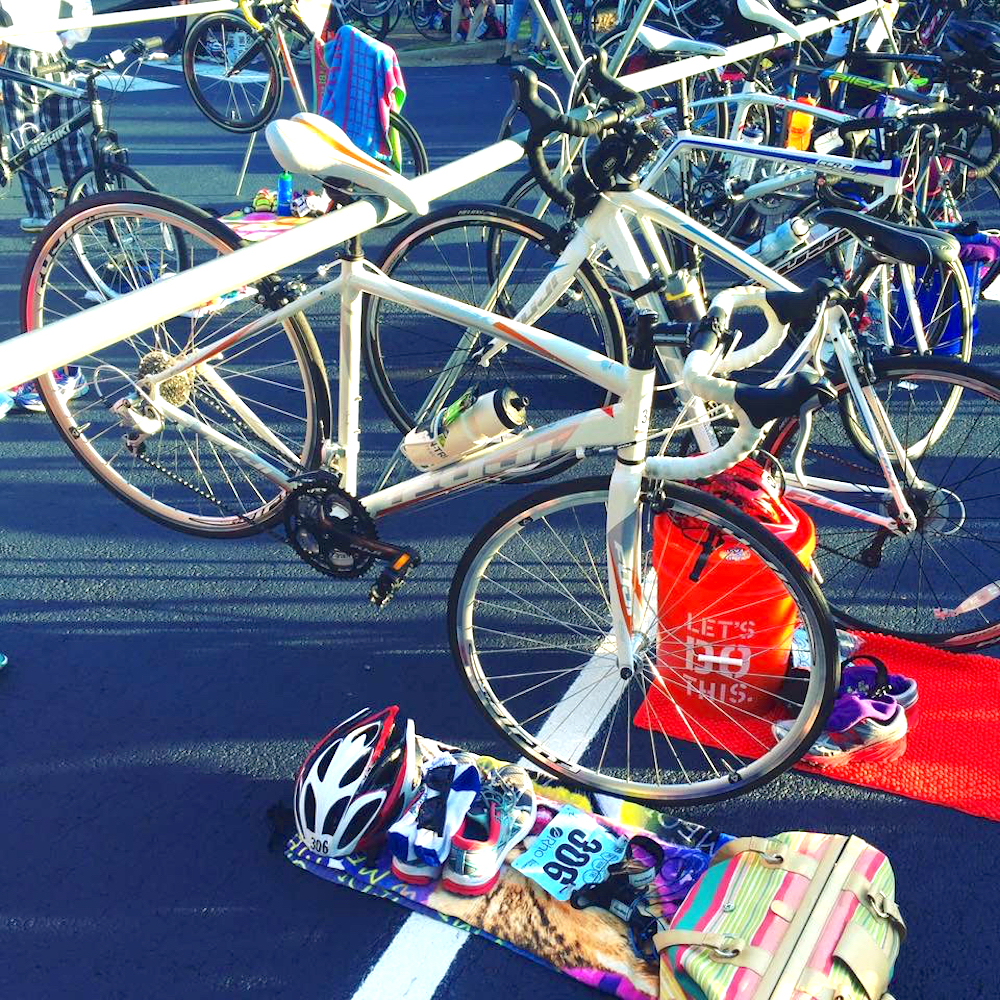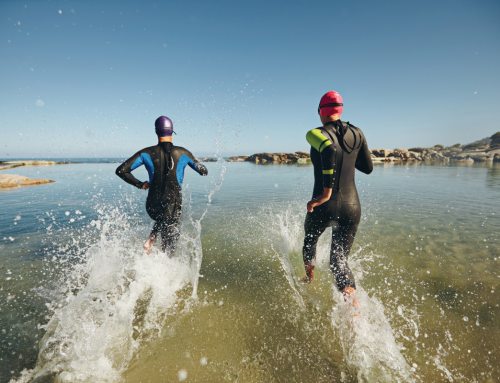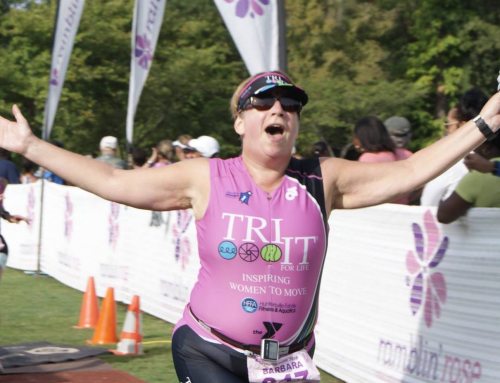It’s one thing to be able to swim, bike and run fast, but it’s another thing to string them all together quickly. Whether you’re new to triathlon or you’ve been rocking the multi-sport lifestyle for years, knowing the tricks to smooth transitions can make or break your race.
Know the rules
This is especially important if you’re a tri-newbie. Check the official USA Triathlon rule book under Transition Area Conduct, but the gist of it is to not ride in or out of the transition like a bat-out-of-hell, keep your stuff where it belongs, leave other people’s stuff alone, don’t toss your bike on the ground, and stay out of other people’s way. Break those rules and you’re likely to get a time penalty. But you’ll be DQ’ed for bringing glass containers, so leave your post-race bottled beverages at home. Also, don’t forget to buckle your helmet chinstrap before getting on the bike.
Another important rule? No nudity. So be sure to keep all your goods hidden throughout the entire race.
Keep it simple
You’re generally relegated a space the size of a postage stamp, so use it wisely. Lay out only the necessities like helmet, shoes, shades, and race number belt. The less stuff you have, the better. Besides, it’s less stuff to lose or get messed up by your rude neighbor, which means less time in transition.
Try some tricks
If you’re new to triathlon, you’re likely not quite ready for the flying mount and dismount (jumping on and off your bike and leaving your shoes on the bike from start to finish). If that’s the case, have your bike shoes ready to go on the ground on your dominant side of the bike (which is usually the left side for right handed folks) by barely buckling/velcroing them.
If you’re wearing socks, have them placed in each shoe “pre-bunched” and ready to roll onto your feet. Place a small towel or mat in front of your shoes to wipe off wet feet and make it easier to slide on your socks and shoes. Also, be sure you’re in the right gear before your rack your bike in transition. This is especially important if the bike course starts on a hill.
Another great trick? Run in and out of transition holding your bike by the saddle. You’re better able to maintain speed and good form instead of that goofy, twisted gallop using both hands on the bike. Once you’re ready to mount (after the line, of course), don’t hesitate to go far past the mount line to avoid other people and potential accidents.
Once you’re in T2 (bike-to-run), consider some type of speed laces to get your running shoes on easily. Be sure to practice this before race day (nothing new on race day, folks!). Grab your race number belt and put that on once you’re running.
Practice, practice, practice
Incorporate transition practice into your training. Every time you do bricks (bike-to-run, run-to-bike, or swim-to-bike), you should be working on mounts and dismounts, efficient techniques for putting on your shoes (especially with wet or sweaty feet), and quickly putting on your helmet. If you’re practicing flying mounts and dismounts, experiment with placing rubber bands around your shoes or crank arms to hold your pedals level. Once you’re on the bike, this helps you get your shoes on faster and safer, so you’re not staring at your feet instead of looking ahead of you. In fact, why not turn your daily morning routine into transition practice? Your family will be impressed by how quickly you can put on makeup, step into your fancy dress shoes and walk out the door all in one smooth motion.
Make your spot standout
When you arrive early on race morning (or the day before), find your transition spot first thing. Stand there for a few moments and look around. What makes that spot unique? It may be facing a certain direction or next to a tree, fence or light pole. You may want to count the number of racks. If you can, hang a balloon on your spot (some races don’t allow this) or tie a bow or other identifier around the end of the rack. Over or under-shooting your spot is one of the easiest ways to lose time and make yourself look like a sad, lost puppy dog.
Do a run-through
Once you have everything ready to go, do at least a partial run-through to make sure you have everything laid out correctly and can easily find your spot. Depending on the layout of the race, your spot may look different from the swim exit and the bike exit. Be sure you’re familiar with the bike start and run start to save yourself from running in circles come race time.
Be courteous
This goes back to the rule book: have a little respect for the other athletes who paid just as much money as you did to be out there, no matter how fast, slow, tall, short, young, or old they are. This is a wildly fun sport, so smile on occasion, apologize if you accidentally get in someone’s way and encourage other participants.
Have fun, fly through transitions and enjoy triathlon!
—–
Chris Newport, MS, RDN/LDN, EP-C, CISSN is a Registered Dietitian, Certified Sports Nutritionist, USAT coach, exercise physiologist, mom, and real-food advocate. She founded The Endurance Edge, an integrative coaching center in Cary, NC offering endurance coaching, metabolic testing, sweat testing, nutrition, massage, physical therapy, sport psychology, and more. Get your free hydration guide online at www.TheEnduranceEdge.com. Find her on Twitter or Pinterest @CoachChris_RD, YouTube or Facebook @TheEnduranceEdge, or Instagram @YourEdgeNC.







